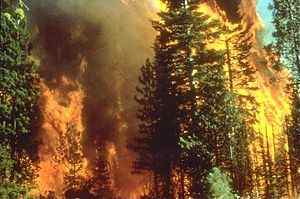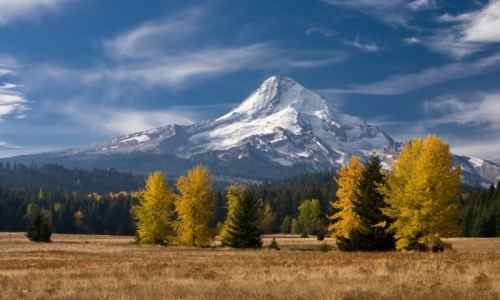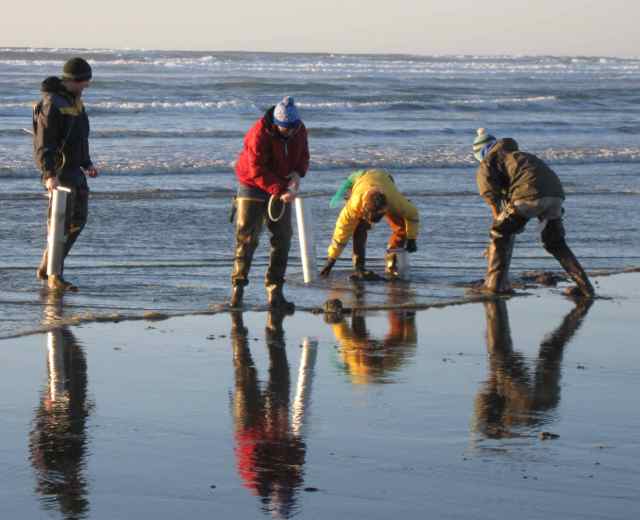Long Range Fish Report
From Sportfishing
From Sportfishing
Fish Report for 9-26-2013

WDFW plans controlled burns in wildlife areas in NE Washington
9-26-2013
WA Department of Fish & Wildlife Staff
SPOKANE - Starting this week, the Washington Department of Fish and Wildlife (WDFW) plans to conduct controlled burns on parts of the Sinlahekin, Scotch Creek, and Sherman Creek wildlife areas in northeast Washington to reduce wildfire risks and enhance wildlife habitat.
Depending on weather conditions and approval from the Washington Department of Natural Resources (DNR), controlled burning could get under way as early as Sept. 26 in Okanogan County.
Tom Leuschen, WDFW wildlife area fuels manager, said recent wildfires demonstrate the importance of conducting controlled burns.
"By burning off brush and other fuels, we can reduce the risk of catastrophic, high-intensity wildfires that can destroy wildlife habitat," Leuschen said. "It's not a question of whether we'll have fires on these lands in the future, but rather the degree to which we can reduce the damage they cause."
In Okanogan County, WDFW plans to burn 382 acres on five units of the Sinlahekin Wildlife Area, along with 31 acres in two units - Chesaw and Scotch Creek - of the Scotch Creek Wildlife Area. Burns on the Sinlahekin are scheduled two or more miles south of Loomis. The Scotch Creek burns will occur one and two miles west of the town of Chesaw.
Farther east, controlled burning could begin as soon as Oct. 1 on 270 acres of Sherman Creek Wildlife Area in Ferry County. The Sherman Creek burn would involve five units ranging from 13 to 170 acres that lie between Highway 20 and Lake Roosevelt, south of Sherman Creek and west to just beyond the Inchelium Highway. If burns are completed on all five Sherman Creek units, three other units just north of Sherman Creek in the Sherman Homes and the WDFW fish hatchery areas might also be burned.
All of the burn project areas range from grasslands to ponderosa pine stands that have been thinned and currently contain logging debris and slash.
Leuschen said controlled burns are monitored constantly until they are out, and that signs will be posted to alert recreationists about them.
While WDFW will also work to minimize impacts of smoke from the burns, Leuschen said some smoke could make its way into nearby communities or temporarily cut visibility on highways at night or early morning.
"Where there's fire, there's smoke," he said. "Motorists should use caution and watch for personnel, fire equipment, and smoke on roads in the vicinity of the burns."
Leuschen said WDFW is coordinating with other agencies in the area to provide assistance with the burn, and is using private contractors with bulldozers and other equipment from local communities.
Depending on weather conditions and approval from the Washington Department of Natural Resources (DNR), controlled burning could get under way as early as Sept. 26 in Okanogan County.
Tom Leuschen, WDFW wildlife area fuels manager, said recent wildfires demonstrate the importance of conducting controlled burns.
"By burning off brush and other fuels, we can reduce the risk of catastrophic, high-intensity wildfires that can destroy wildlife habitat," Leuschen said. "It's not a question of whether we'll have fires on these lands in the future, but rather the degree to which we can reduce the damage they cause."
In Okanogan County, WDFW plans to burn 382 acres on five units of the Sinlahekin Wildlife Area, along with 31 acres in two units - Chesaw and Scotch Creek - of the Scotch Creek Wildlife Area. Burns on the Sinlahekin are scheduled two or more miles south of Loomis. The Scotch Creek burns will occur one and two miles west of the town of Chesaw.
Farther east, controlled burning could begin as soon as Oct. 1 on 270 acres of Sherman Creek Wildlife Area in Ferry County. The Sherman Creek burn would involve five units ranging from 13 to 170 acres that lie between Highway 20 and Lake Roosevelt, south of Sherman Creek and west to just beyond the Inchelium Highway. If burns are completed on all five Sherman Creek units, three other units just north of Sherman Creek in the Sherman Homes and the WDFW fish hatchery areas might also be burned.
All of the burn project areas range from grasslands to ponderosa pine stands that have been thinned and currently contain logging debris and slash.
Leuschen said controlled burns are monitored constantly until they are out, and that signs will be posted to alert recreationists about them.
While WDFW will also work to minimize impacts of smoke from the burns, Leuschen said some smoke could make its way into nearby communities or temporarily cut visibility on highways at night or early morning.
"Where there's fire, there's smoke," he said. "Motorists should use caution and watch for personnel, fire equipment, and smoke on roads in the vicinity of the burns."
Leuschen said WDFW is coordinating with other agencies in the area to provide assistance with the burn, and is using private contractors with bulldozers and other equipment from local communities.
< Previous Report Next Report >
More Reports
WA Department of Fish & Wildlife Reports
for Thursday, September 26th, 2013
Columbia River: Mark-selective rule for chinook removed on portion of the lower Columbia River
Puyallup River: Puyallup River sport salmon fishery will reopen in October
• WDFW lifts campfire restrictions on most lands east of Cascades

9-25-2013
OLYMPIA - The Washington Department of Fish and Wildlife (WDFW) has tentatively scheduled razor-clam digs through October, while continuing to...... Read More

LongRangeSportfishing.net © 2025. All Rights Reserved.
Website Hosting and Design provided by TECK.net
Website Hosting and Design provided by TECK.net